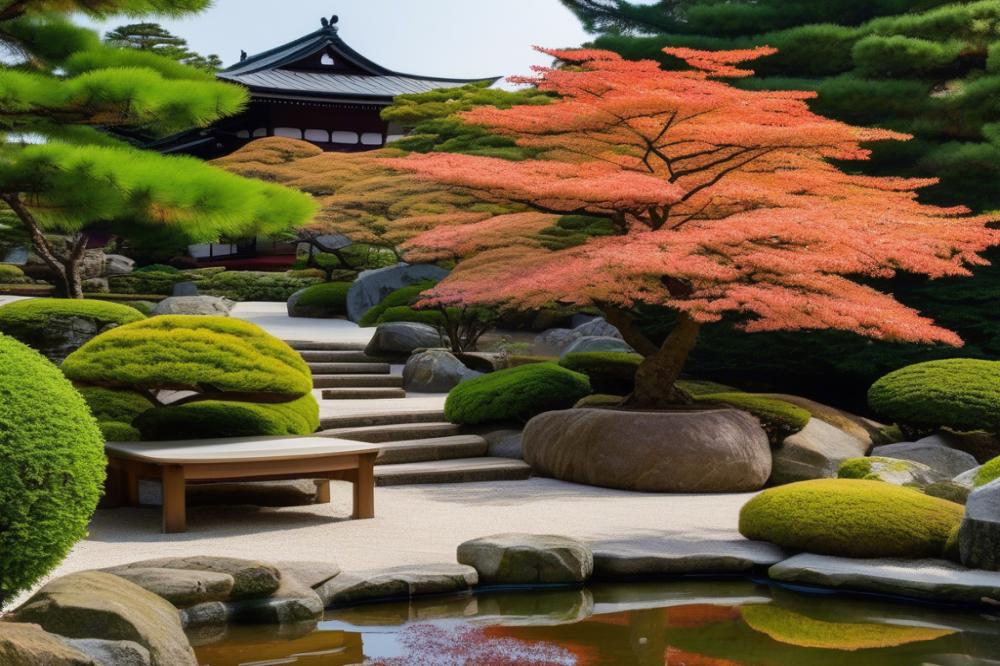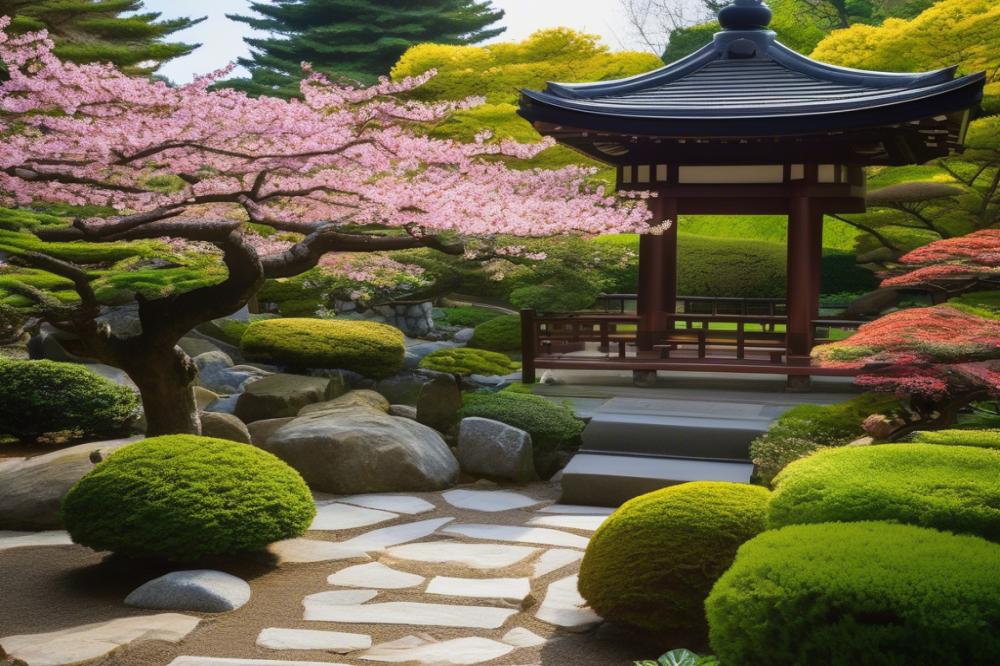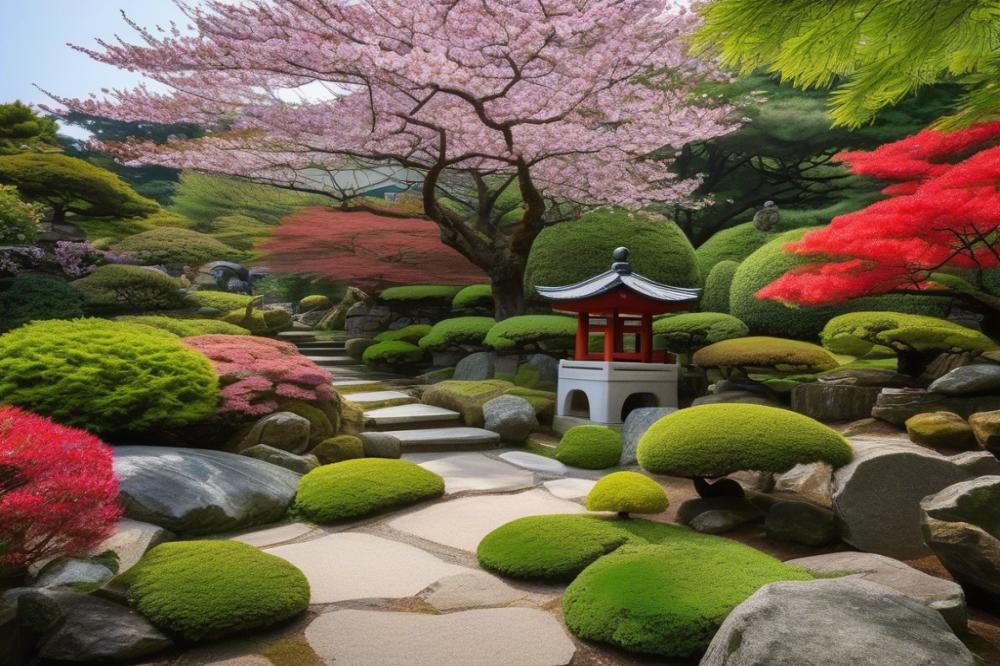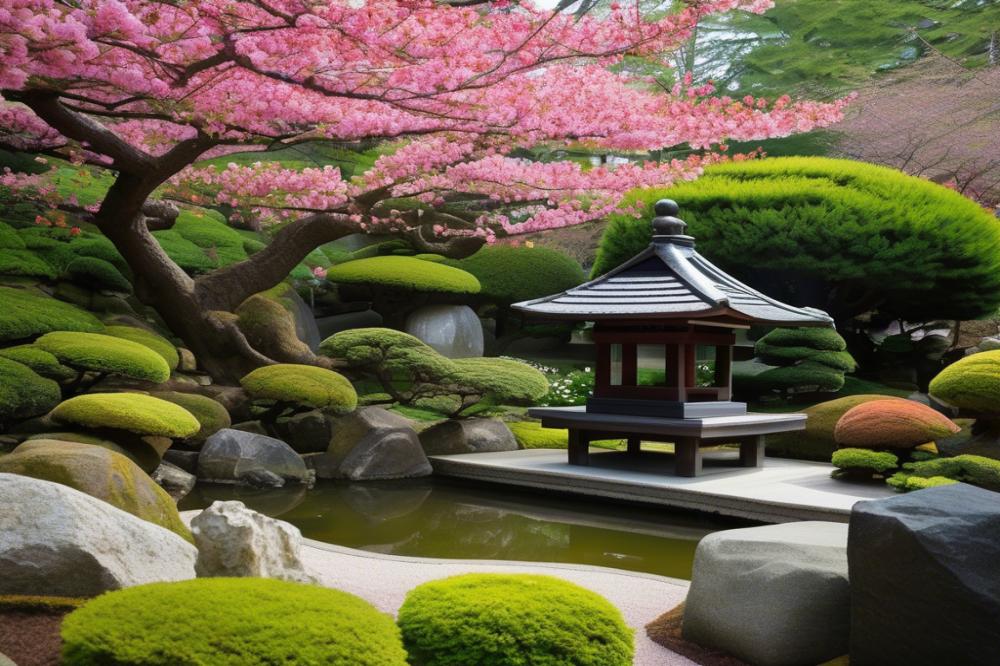Seasonal Care Tips for Japanese Gardens
Japanese Gardens hold a special place in the world of gardening and landscaping. These serene spaces blend natural beauty with thoughtful design, reflecting the harmonious relationship between nature and human creativity. A well-crafted landscape encourages contemplation and promotes peace. Each element within these gardens carries significance, often representing deeper cultural traditions and philosophies.
With each change of season, the landscape morphs magnificently. The importance of Seasonal Care cannot be overstated. Proper maintenance activities not only preserve aesthetic value but also enhance the garden’s design and overall appearance. Dedicating time to plant care ensures that plants thrive throughout the year, each season revealing its own unique charm.
Engaging with the seasonal changes allows gardeners to appreciate the evolving beauty. Spring bursts forth with fresh blooms, while summer offers lush foliage. Autumn paints the surroundings in vivid colors, and winter’s stillness reveals simplicity and tranquility. Pruning during these transitions helps maintain a balanced structure. Seasonal plants can be introduced at strategic times, enriching the environment and supporting dynamic growth.
Ultimately, thoughtful gardening underscores the beauty of Japanese aesthetics. Each phase of maintenance offers insights into this distinctive landscaping style. Through careful planning, one can enhance not just individual elements, but the entire atmosphere of the garden. By following a few maintenance tips and remaining attuned to the seasonal rhythms, anyone can appreciate the elegance of these tranquil landscapes.
Understanding Japanese Gardens


Japanese gardens represent a rich culture and history. They come in various types, each with its distinct gardening methods and landscaping styles. Rock gardens, known as Zen gardens, focus on simplicity and tranquility. These designs use stones, gravel, and minimal plant life to create peaceful scenes. In contrast, stroll gardens invite visitors to walk through, unveiling beauty at every turn. These gardens often include water features and seasonal plants that change throughout the year.
Principles of Japanese aesthetics play a vital role in garden design. Harmony is essential; plants, rocks, and water must work together seamlessly. Balance also holds significant meaning. Designers seek to create a sense of equilibrium, whether through symmetry or asymmetry. Natural arrangements reflect the beauty of chaos found in nature. Every element serves a purpose, contributing to the garden’s overall feel.
When considering landscaping, it’s important to recognize how seasons affect the environment. Plant care should adjust with seasonal changes. In spring, vibrant blossoms and fresh greenery welcome warmer weather. Summer calls for pruning and maintenance tips to keep everything tidy. As autumn approaches, colors transform, making landscapes burst with reds and yellows. Winter, though bare, has its own stark beauty that allows for reflection.
Different flowers and shrubs highlight various seasons. Selecting the right plants ensures year-round interest. Some gardens also incorporate ornaments and structures that enhance their aesthetic values. The placement of rocks and water can guide the eye, creating pathways that encourage exploration. Such elements bring visitors into a deeper experience.
Understanding these concepts elevates your gardening skills. Integrating Japanese aesthetics can transform any space into a serene retreat. Careful attention to design principles fosters a peaceful environment. As you maintain your garden, remember to embrace both simplicity and complexity. True beauty often lies in the details.
Seasonal Changes and Their Impact


Seasonal changes have a significant influence on plant care in a garden. Each season brings its own set of requirements. Understanding these changes is essential for successful gardening and landscaping.
Spring marks the beginning of renewal. This season is ideal for planting seasonal plants. Prepare the soil with compost to promote growth. Pruning should occur here as well, removing any dead branches from winter. New buds will emerge, making the garden vibrant again. The focus during spring should be on nurturing plants. Watering should be consistent, as the weather begins to warm up.
Summer follows, bringing heat and humidity. This is the time for intensive maintenance tips. Landscape features may require occasional updates. Plant care becomes crucial, as some species may struggle in high temperatures. Monitoring water levels is vital, particularly for those plants that thrive in moist environments. Shade-loving plants should be checked carefully to ensure they’re not stressed.
As autumn arrives, a beautiful transformation occurs. Leaves change color, creating a stunning display. This season is essential for preparing the garden for winter. Raking leaves from pathways helps maintain the aesthetics. Additionally, it’s crucial to address any pests before they become a larger issue. Pruning again is needed to encourage healthy growth for the next year. Protecting delicate plants with mulch can enhance their chances of survival.
Winter is a time of rest for many plants. The focus shifts to maintenance rather than growth. Heavy snowfall may require clearing off delicate branches to avoid breakage. It’s also a great time to reflect on garden design and make plans for the upcoming seasons. The cold climate guides the selection of hardy plants that can endure harsh conditions. Long-term success in a garden relies on choosing species that align with the local climate.
Seasonal Plant Selection


Selecting the right plants for your garden requires understanding their seasonal cycles. In spring, vibrant cherry blossoms and delicate azaleas begin to bloom. These seasonal plants create a lively atmosphere, marking the renewal of nature. Consider planting iris and peonies too, as they add color just as the weather warms up.
During summer, lush greenery becomes prominent. Plant care focuses on maintaining vibrant foliage. Incorporate summer-blooming plants like hydrangeas and lotus flowers. These species fit well with the Japanese aesthetics, promoting a serene environment. Annual pruning can help maintain their shape and encourage healthy growth.
As autumn arrives, stunning foliage transitions into red, orange, and gold hues. Choosing maples can transform your landscape into a breathtaking display. Look for varieties that suit your climate for the best results. Sunlight plays a crucial role, so position them where they can thrive. Seasonal changes bring a unique beauty, and this time also requires some maintenance tips such as ensuring adequate watering.
Winter demands a different approach in plant selection. Evergreens play a critical role here, providing structure during the colder months. Consider adding plants like pine or bamboo, which are not only resilient but also contribute to the aesthetic quality. Creating landscape designs with winter interest ensures that your garden remains visually appealing year-round.
Integrating seasonal changes into your design is key. A well-planned garden captures the essence of each season. Pay attention to blossom cycles and overall landscaping style to achieve harmony. Choose plants that complement each other through their blooming phases, offering continuity in beauty. With thoughtful gardening, your landscape can reflect the serene and ever-changing seasons of life.
Maintenance Tips for Each Season


Spring marks a vital time for pruning. Focus on removing any dead or damaged branches. This task promotes healthy growth. Spring is also the perfect season to tidy up garden beds. Mulching with organic materials can suppress weeds while improving aesthetics.
Consider reevaluating your landscaping style during this time. Adding seasonal plants can bring bursts of color. Examine existing plants for overcrowding and thin them out. Providing adequate space helps each plant to thrive. Keep an eye out for pests that may wake up with the warmer weather.
Summer demands attention, especially regarding watering. Hot days can lead to stress for plants. Deep watering is essential to reach the root zone. Morning is the ideal time to water. This practice minimizes evaporation and helps plants absorb moisture better.
Regularly check for signs of disease and pests. Healthy plants are crucial for a thriving garden. Foliage should be lush and vibrant. If issues arise, take immediate action to treat them. Regular maintenance keeps your landscape looking its best.
As autumn approaches, leaf management becomes important. Raking leaves may seem simple, but it’s crucial. Clearing away fallen foliage helps prevent disease. Some gardeners choose to create compost from leaves. This method enriches the soil for the next planting season.
Pruning in fall focuses on shaping the plants. Aim to prepare them for winter. Removing spent flowers can tidy the overall appearance. Strengthening plant structure is a key goal. If you have shrubs, trim them to encourage more growth come spring.
Winter introduces special protection techniques for plant care. Mulching adds insulation around the roots. This layer guards against freezing temperatures. Covering delicate plants with frost cloth is wise. These strategies help maintain plant health despite harsh conditions.
Be mindful of the aesthetics of your space during winter. Dormant trees and plants can still provide beauty. Strategic placement of rocks or garden ornaments can enhance visual interest. This landscape design helps to keep the area engaging year-round.
Techniques for Rock gardens
Rock gardens play a significant role in reflecting the Japanese aesthetics of balance and harmony. These landscapes often bring together stones and plants to create a serene environment. Creating a successful rock garden involves more than just placing some rocks around plants. Specific techniques in design and maintenance can greatly enhance the beauty and functionality of these spaces.
Arranging stones in a thoughtful manner is vital in any rock garden. Consider the placement and size of each stone carefully. Larger boulders can serve as focal points, while smaller stones can fill gaps and create layers. Aim for a natural look, where stones appear to be naturally occurring in the landscape. This arrangement not only enhances visual appeal but also respects the principles of landscaping.
Soil composition is another key factor in gardening. Rock gardens typically require well-drained soil to avoid excess moisture around the roots. Combine sand, gravel, and organic matter to create the ideal base. This type of soil allows for better drainage while still providing necessary nutrients to seasonal plants. Always test your soil before planting. This step can help you ensure that the right mix is in place.
When selecting plants, choose species that can thrive in rocky environments. Drought-resistant varieties work exceptionally well. Look for ground covers or low-growing plants that can spread across the stones. Adding moss can also bring a touch of softness to the rugged feel of the rocks. Native plants often do well in such landscapes, as they are adapted to the local climate and soil conditions.
Ongoing maintenance is crucial for keeping the rock garden looking its best. Regular pruning of shrubs and perennials helps maintain shape and encourages healthy growth. Seasonal changes affect plant care routines. In fall, remove any dead or dying foliage. This practice not only keeps the garden tidy but reduces pests and diseases that may linger. During spring, fresh soil can aid new growth and provide nutrients.
As gardeners, observe how the different elements interact throughout the year. Incorporating seasonal plants adds variety and color to the rock garden. The careful choice of these plants can dramatically change the appearance of the landscape with each season. Pay attention to shifts in light and shadow as the sun moves. This awareness can impact plant placement and overall garden design.
Lastly, don’t forget the importance of a water source. Even though many rock garden plants are drought-tolerant, they still need occasional watering, especially in dry spells. A small fountain or pond can enhance the tranquil effect of the garden. With the right techniques, rock gardens can become stunning showcases of nature that embody the spirit of traditional practices.
Final Thoughts on Seasonal Care
Caring for a Japanese garden involves understanding the rhythm of the seasons. Each time of year brings specific tasks that are essential for maintaining beauty and serenity. Spring invites fresh growth and colorful blooms. This is the ideal time for pruning and preparing the landscape for the warmer months ahead. Don’t forget to refresh mulch and plant new flowers to enhance the overall appearance.
Summer demands a keen eye for watering. Plants need more moisture, and shaded areas may require special attention. Regular weeding during this season helps prevent unwanted competition for nutrients. Keeping paths clear ensures easy access and a tidy look.
As autumn arrives, it’s time to prepare for the colder months. Leaf cleanup becomes important, especially from water features or stone pathways. Moreover, consider layering mulch around plant bases for added protection. This simple step can be crucial in maintaining plant health through winter.
Winter may seem quiet, but it presents a moment for reflection. Inspect your space for any damaged areas. Use this time to think about future projects or improvements to the landscaping. Gardening in these months might involve simpler tasks like planning and organizing tools.
In summary, every season brings unique opportunities and challenges. Prioritizing seasonal care will preserve the tranquility and aesthetic of your surroundings. Understanding these changes not only beautifies your outdoor space but also enhances your well-being. Make seasonal care an integral part of your gardening routine for lasting enjoyment.



